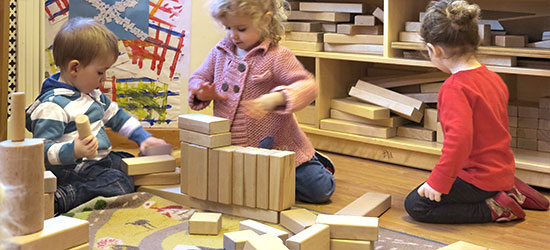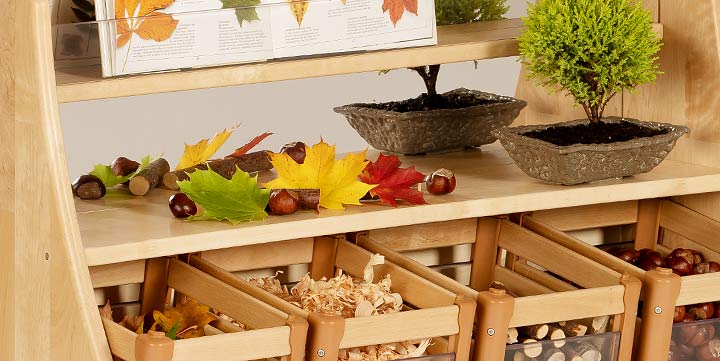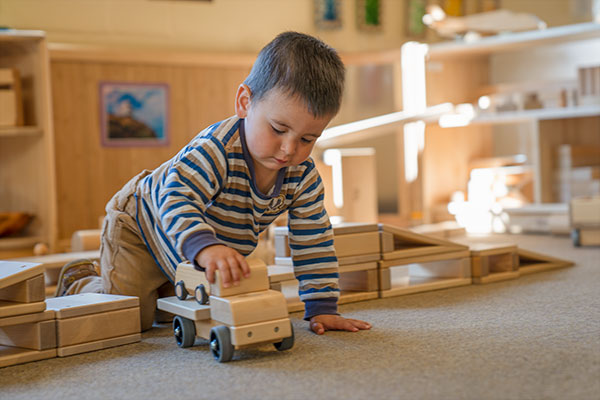Play through the eyes of the child
Challenging adult assumptions about play
| November 2016What is play?
What does play mean to you? At the 6th Canterbury Froebel Conference 2016 participants identified play using words such as “fun,” “freedom,” “choice,” “self-exploration” and “imaginative;” however despite being experienced play practitioners, it was clear that play means different things to different people (Takhvar, 1988). In recent years, the authors have posed this question to many practitioners across the UK and Europe and have consistently found varied responses; we therefore argue that the role of subjectivity in defining play cannot be ignored. When asked, adults often find it difficult to articulate what play actually is, but say they know it when they see it (Smith & Vollstedt, 1985). Play is actually much more complex than it at first seems.

Defining play
The complexity of play has been generally undervalued for many years, however attempts have been made to better understand it. For example, Piaget attempted to categorise play stages (see Piaget, 1951), while other theorists have attempted to explain play according to criteria (e.g. Rubin et al., 1983). Further refinement has been offered by Pellegrini (1991), who proposed a continuum theory of play based on play criteria. More recently, from a playwork perspective, Hughes (2002) identified a taxonomy of play types; for example, dramatic play, exploratory play and recapitulative play. these theories all understand play from an adult perspective. So what’s wrong with that? Indeed, in 2000 the QCA stated that “children do not make a distinction between ‘play’ and ‘work’ and neither should practitioners” (p.11).
Early years practitioners would tend to agree with Froebel (1782–1852) that play is the child’s way of learning about and understanding the world around them. Therefore, as practitioners, how can we fully understand the child’s world without seeing it through their eyes?
Including the child
Literature in this field continues to extol the need for child-centred approaches in order to best meet the needs of the child and to facilitate appropriate play experiences. Previous research has identified that children do make a distinction between ‘play’ and ‘not play’ using cues such as: adult presence, location of the activity (floor vs. table) and whether the child has a choice (Howard, 2002; Howard & McInnes, 2013). As exemplified by the figure below, some of these cues were manipulated to create formal (occurred at a table, with an adult present and no choice in resources) and playful (occurred on the floor, with an adult nearby and with choice in resources) practice conditions. When in the playful, rather than formal practice condition, children showed significant improvements in learning and behaviours which supported learning. They also demonstrated an increased sense of well-being (McInnes et al., 2009; McInnes, 2011).
Our current study
Our current research has sought to include the views of children as well as adults using the above approach: the Activity Apperception Procedure (Howard, 2002). We asked children and teachers to sort a set of photographs depicting various play activities and classify them into ‘play’ and ‘not play’ categories. There were only a few similarities in the way adults and children perceived play; for example, the location of play determined how the activity was viewed, if it occurred on the floor it was more likely to be play. There were notable differences in how children and adults perceived play. The biggest difference was the presence of an adult in determining whether or not an activity was perceived as play. When adults were present, children were less likely to view the activity as play, whilst for adults this was not a factor in their perceptions of play. Another key finding from this study was that teachers explicitly made assumptions that children view play activities in the same way as them.
Implications for practice
Unchallenged assumptions made about children’s play can have negative implications for children’s play and learning experiences. For example, a teacher may feel he or she is offering child-centred play opportunities to children, but the reality is that children do not see it this way. Simple changes can be made to overcome this, for example locating activities on the floor can enable children to view the activity as play. Teachers also need to think about how their presence impacts on children’s play.
Perhaps the most important implication for practice is the importance of viewing play from the child’s perspective. If we do this we can enable children to feel and be playful. Arguably, being playful is more important for learning and development than the play activity as it enables feelings of motivation, enthusiasm and well-being (Moyles, 1989). Only then can we fully understand play and offer play-based learning experiences which will capture the child’s imagination and enable development.
References
Froebel, F. W. (1887). The Education of Man. New York: Appleton
Howard, J. (2002). Eliciting young children’s perceptions of play, work and learning using the activity apperception story procedure. Early Child Development and Care. 172, pp. 489–502.
Howard, J. & McInnes, K. (2013). The Essence of Play. Abingdon: Routledge.
Hughes, B. (2006). Play Types – Speculations and Possibilities. London: Centre for Playwork Education and Training.
McInnes, K., Howard, J., Miles, G. E. & Crowley, K. (2009). Behavioural differences exhibited by children when practicing a task under formal and playful conditions. Educational & Child Psychology, 26(2), pp. 31–39
McInnes, K. (2011). Indicators of children’s wellbeing in activities defined by children as play or not play. http://www.playwales.org.uk/login/uploaded/documents/Events/IPA%202011/karen%20mcinnes.pdf (Last accessed 18th of May 2021.)
Moyles, J. (1989) Just Playing? Buckingham: Open University Press.
Pellegrini, A. D. (1991). Applied Child Study (2nd ed.). N. J.: Lawrence Erlbaum Associates, Inc.
Piaget, J. (1951). Play, Dreams and Imitation in Childhood. London: William Heinmann Ltd.
Qualifications and Curriculum Authority, (2000). Curriculum Guidance for the Foundation Stage. London: QCA
Rubin, K. H., Fein, G. G., & Vandenberg, B. (1983). Play. In P. H. Mussen (Ed.), Handbook of Child Psychology. 4th Edition. Vol. IV. Socialisation, Personality and Social Development (4th ed., Vol. IV, pp. 694–759). New York: John
Smith, P. K. & Vollstedt, R. (1985). On defining play: an empirical study of the relationship between play and various play criteria. Child Development. 56, pp. 1042–1050
Takhvar, M. (1988) Play and theories of play: A review of the literature. Early Child Development and Care. 39, pp. 221–244.





